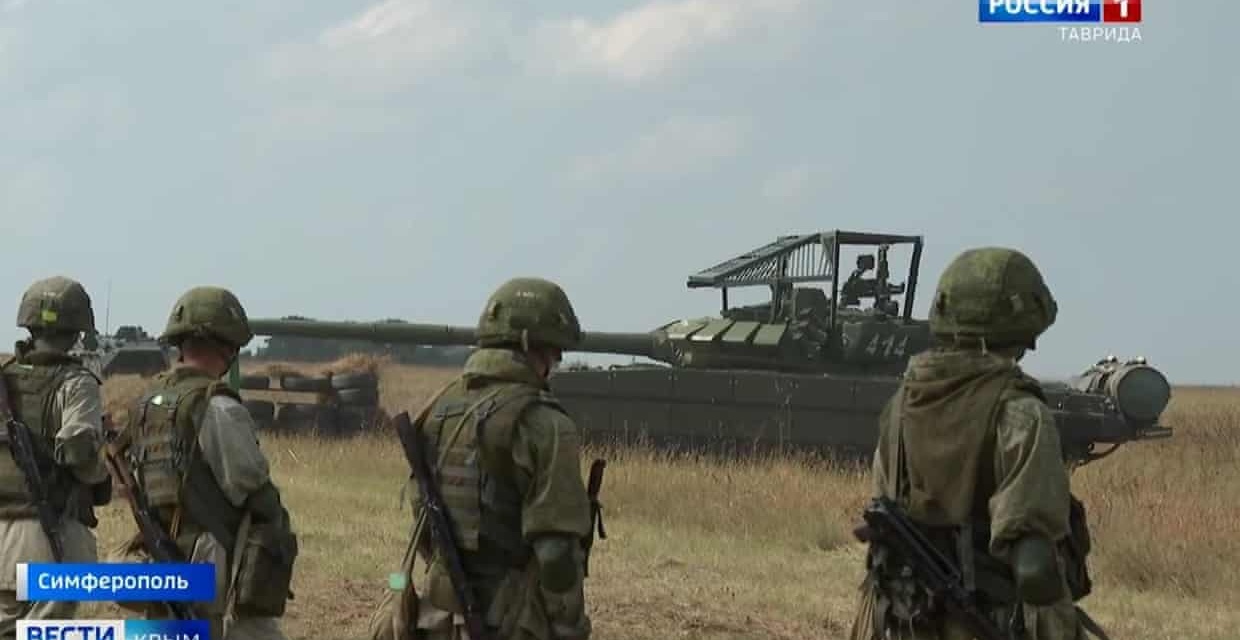Russian State TV1 shows Russia’s troops on the border with eastern Ukraine (File)
On the eve of talks with Russia over Moscow’s threat to Ukraine, US officials are signalling measures that would be taken if Russian troops launch a cross-border invasion.
Officials told journalists of plans for economic and military action, acknowledging that the Obama Administration was too limited in its response when Russia annexed Crimea in 2014 after the fall of the pro-Russian Ukrainian leader Viktor Yanukovych to popular protests.
The economic pressure would include a cutoff of Russia’s largest financial institutions from global transactions, although the officials would not confirm if they will block Moscow from the SWIFT system, which carries out financial transactions between more than 1,100 banks in 200 countries.
The officials also pointed to an embargo on US-made or US-designed technology for Russia’s defense-related and consumer industries. The measures would focus on the aerospace and arms sectors, including fighter aircraft, anti-aircraft systems, anti-satellite systems, space systems and emerging technologies like artificial intelligence and quantum computing.
See also EA on Monocle 24: The US and Next Steps Over Putin’s Threat to Ukraine
UPDATES: Biden to Putin — US and Allies Will “Respond Decisively” Over Russia Attack on Ukraine
The Commerce Department may also effectively ban the export of any consumer goods to Russia with US-made or US-designed electronics. The step would cover European, South Korean, and other foreign manufacturers using US chips or software.
US to Russia: Do You Want to Face Ukraine Insurgency?
On the military front, the chairman of the US Joint Chiefs of Staff, Gen. Mark Milley, sent stark message to his Russian counterpart Gen. Valery Gerasimov two weeks ago. Milley cautioned that while Russia could quickly overwhelm defenses in eastern Ukraine, it would face a protracted, bloody insurgency, similar to that in Afghanistan against the Soviet Union in the 1980s.
The US has implemented the advance positioning of arms for Ukrainian insurgents, probably including Stinger anti-aircraft missiles. In the past three months, it has delivered 180 anti-tank Javelin missiles, two patrol boats, ammunition for grenade launchers, machine guns, secure radios, medical equipment, and other “defensive” items.
A “senior Administration official” reiterated reporters on Saturday that the US “has no intention” of deploying “offensive missile systems. He said that the talks will seek a “reciprocal commitment” from the Russians.
The official emphasized that the US will not agree to the demand of Russian leader Vladimir Putin for no links between NATO and Ukraine.
“It is not up to Russia…to decide for other countries who they can be allies with. Those are decisions only for those countries and the Alliance itself. In the context of NATO, we refer to that as the open door, and neither Russia nor any other country is going to slam it shut,” the official said.
The US will also not discuss any reduction to its military forces in Eastern Europe, the official noted.
This Week’s Talks
Last month the Biden Administration established an inter-agency planning group under National Security Advisor Jake Sullivan to examine the scenarios if Russia invaded Ukraine. The group is considering Russian cyber-attacks — seeking to cripple Ukraine’s infrastructure including the electricity grid and pipelines — as well as the military situation.
The US delegation on Monday will be led by Deputy Secretary of State Wendy Sherman, who was central in negotiation of the 2015 nuclear agreement with Iran.
Talks will follow on Wednesday with the Organization for Security and Cooperation in Europe, including Ukraine, and with NATO members.

